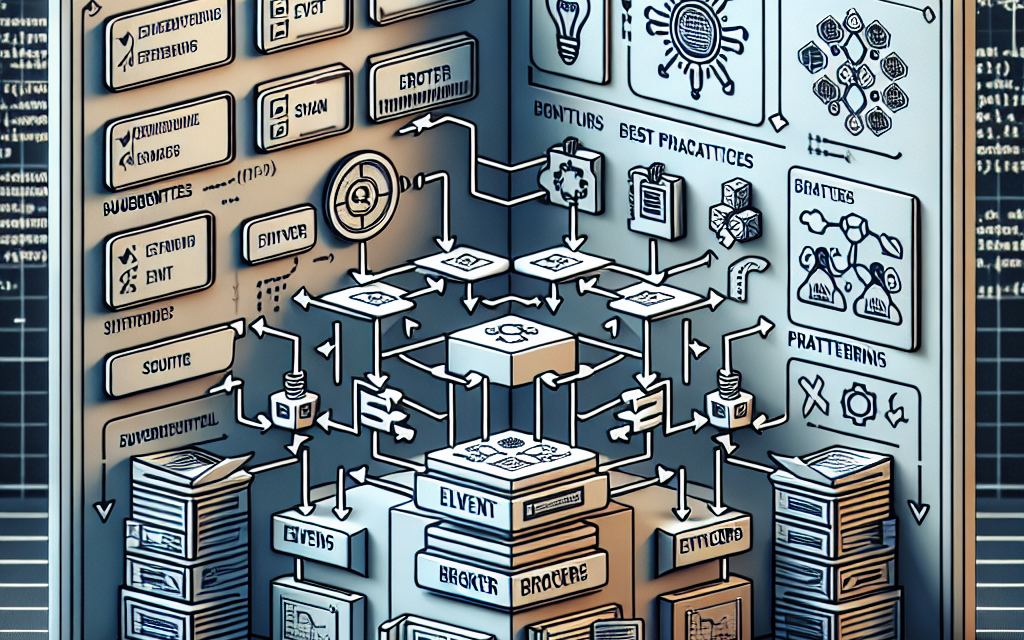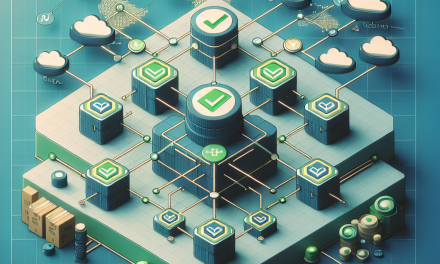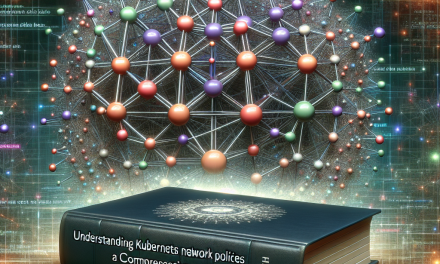In the rapidly evolving landscape of software development, event-driven architecture (EDA) has emerged as a compelling design pattern, allowing applications to react to real-time events and enabling greater scalability and resilience. As organizations embrace cloud-native technologies, Kubernetes stands out as a leading platform for orchestrating containerized applications. In this article, we will explore the best practices and patterns for deploying event-driven architectures in Kubernetes.
Understanding Event-Driven Architecture
Event-driven architecture is a software design paradigm wherein applications are built around the production, detection, consumption, and reaction to events. Unlike traditional request-response models, event-driven systems enable asynchronous communication, facilitating a more responsive and flexible application environment.
Key Components of EDA
- Event Producers: The source of events, such as web services, IoT devices, and microservices.
- Event Channels: Middleware like message queues or streaming platforms (e.g., Apache Kafka, RabbitMQ) that manage the transmission of events.
- Event Consumers: Services or functions that react to events, executing specific business logic based on the events received.
- Event Store: Storage solutions that maintain event history, useful for debugging, audit trails, and replaying events.
Why Use EDA in Kubernetes?
Kubernetes is an ideal platform for event-driven architectures due to its robust orchestration capabilities, scalability, and support for microservices. Here’s why integrating EDA with Kubernetes is advantageous:
- Scalability: Kubernetes can automatically scale services based on event load, making it easy to handle spikes in demand.
- Resilience: With Kubernetes’ self-healing features, event-driven services can recover from failures with minimal downtime.
- Decoupling: EDA promotes loose coupling between services, allowing for more straightforward management and deployment workflows.
Best Practices for Implementing EDA in Kubernetes
1. Leverage Kubernetes-native tools
Using Kubernetes-native tools and patterns enhances the synergy between EDA and Kubernetes, such as:
- Kubernetes CronJobs: For scheduled event generation.
- Custom Resource Definitions (CRDs): To implement domain-specific event sources or sinks.
- Operators: Automate the lifecycle of event-driven components like Kafka or RabbitMQ.
2. Use a Messaging Layer
Select an appropriate message broker or event streaming platform. Common choices include:
- Apache Kafka: Great for high-throughput scenarios and durable message storage.
- RabbitMQ: Ideal for complex routing and use cases that require robust message queuing.
- NATS: Lightweight and designed for microservices, providing low-latency messaging.
Ensure that the messaging layer is resilient and can scale with your application needs. Kubernetes StatefulSets can be used to manage stateful applications like Kafka brokers.
3. Monitor and Log Events
Monitoring and logging are paramount in an EDA. Implement:
- Prometheus and Grafana: For collecting metrics and visualizing events.
- ELK Stack (Elasticsearch, Logstash, Kibana): For centralized logging, enabling easy debugging and event analysis.
Establish alerting mechanisms for event processing failures, latency issues, or message queue backlogs.
4. Implement Idempotency
Ensure that event consumers are idempotent, meaning that processing duplicate events will not cause unintended side effects. This is critical in distributed systems where message delivery is not guaranteed to be exactly-once.
5. Design for Failure
Assume that failures will occur, and design your systems accordingly:
- Use Dead Letter Queues (DLQs) to handle events that cannot be processed after a set number of retries.
- Implement circuit breakers and retries to provide more resilience against transient errors.
6. Testing and Staging
Testing an event-driven architecture can be challenging. Utilize:
- Event Simulation Tools: Create mock events to test consumer behavior.
- Chaos Engineering: Introduce controlled failures to test the resilience of the system.
Event-Driven Patterns in Kubernetes
Several architectural patterns can enhance your event-driven systems:
1. Event Sourcing
Maintain state as a series of events instead of a current state. Each event represents a change, allowing full reconstruction of the application state and facilitating auditing.
2. CQRS (Command Query Responsibility Segregation)
Split read and write duties, allowing scalability and performance improvements. Using Kubernetes, you can deploy separate microservices for commands and queries, each scaling independently.
3. Sagas
Utilize Saga patterns for managing distributed transactions in an event-driven way, coordinating microservices’ interactions and ensuring data consistency.
Conclusion
Event-driven architecture opens the door to a new level of responsiveness and scalability for applications deployed on Kubernetes. By following best practices and leveraging appropriate patterns, businesses can build systems that are not only efficient but also capable of adapting to dynamic user needs and market changes. As the cloud-native ecosystem continues to evolve, embracing EDA in Kubernetes will be crucial for achieving robust, scalable, and resilient applications.
For more insights and articles on cloud-native technologies, stay tuned to WafaTech Blogs!




